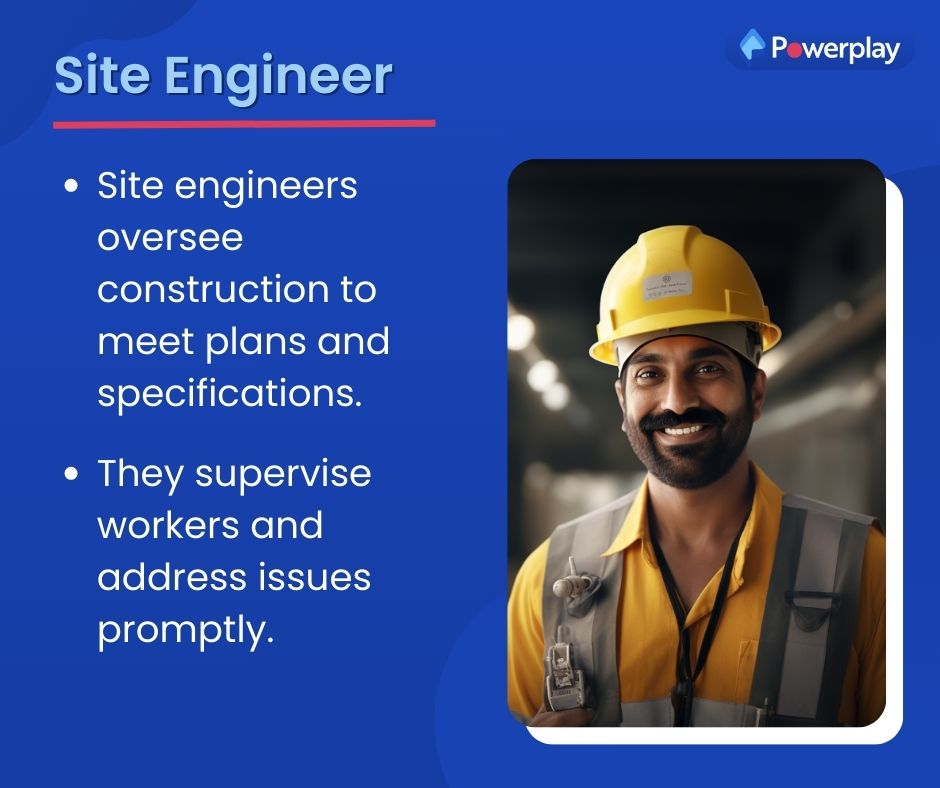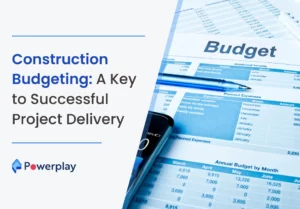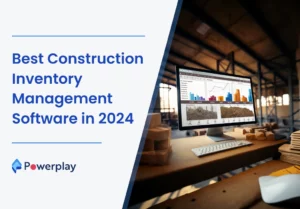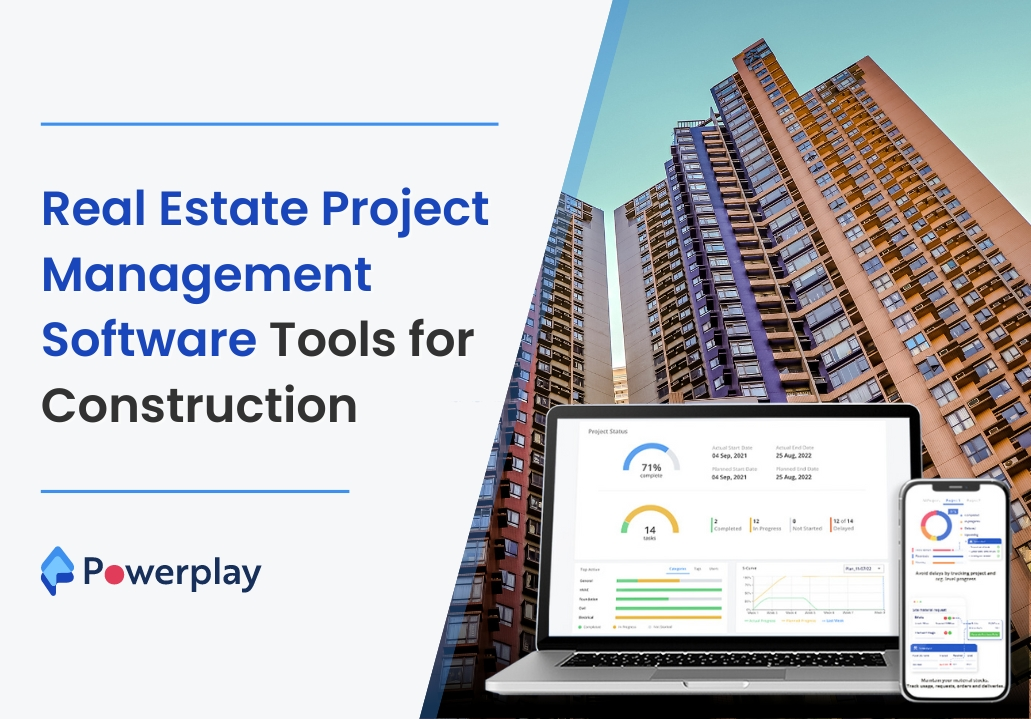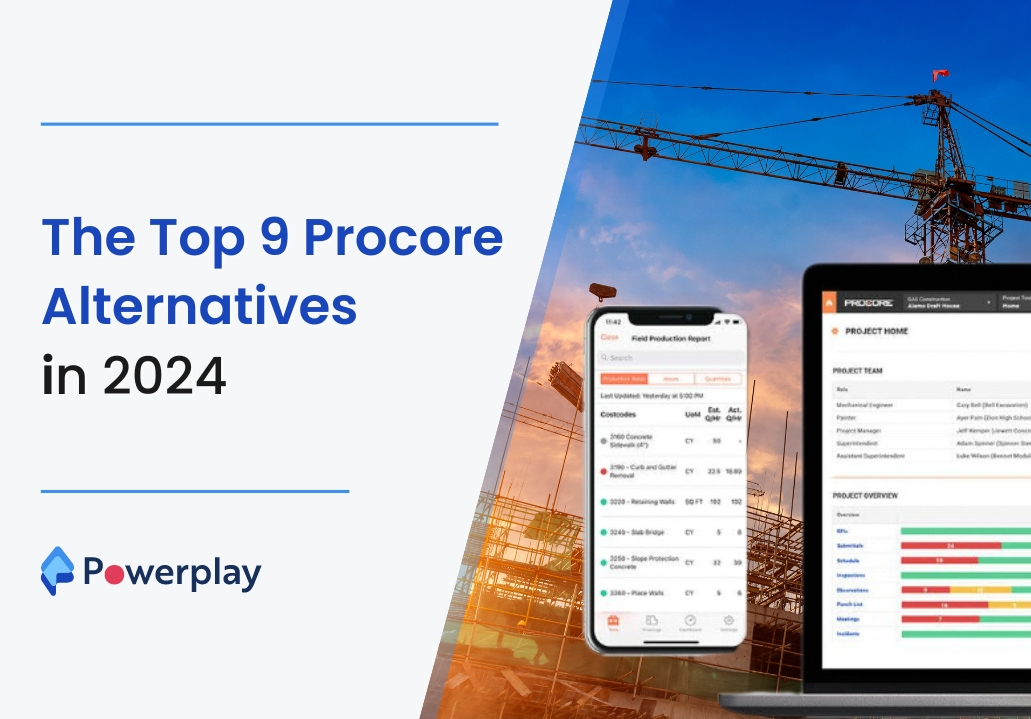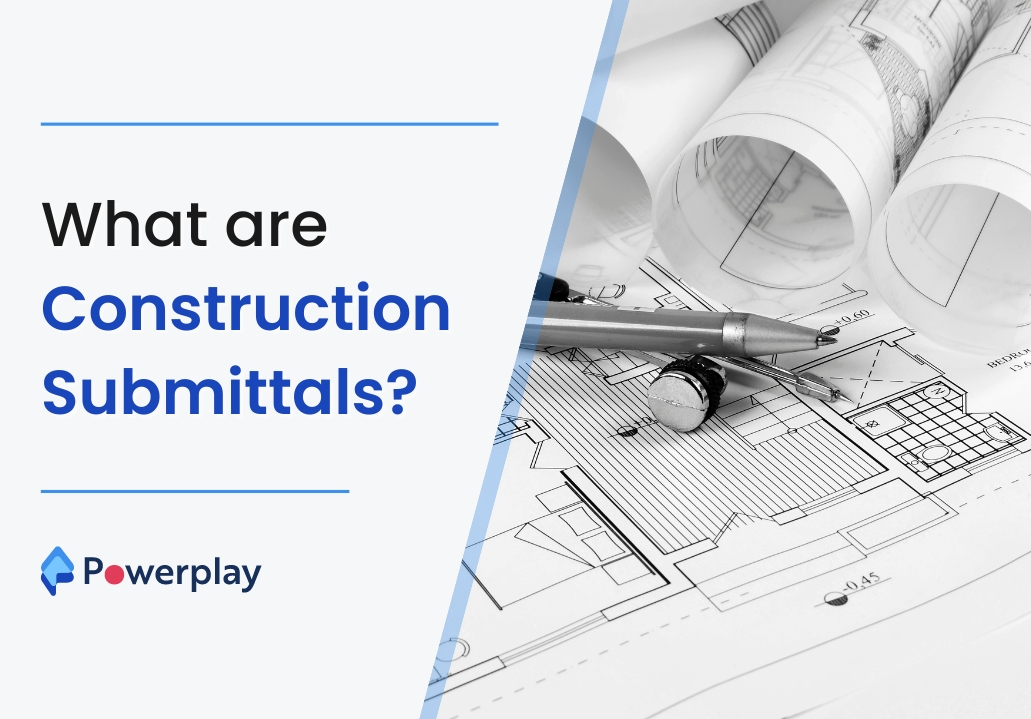The Ultimate Guide to Construction Project Management
-
Dharmesh Dave
- April 16, 2024

Are you ready to revolutionise your construction project management experience? Dive into the world of Powerplay – the ultimate solution that’s set to transform how construction projects are planned, executed, and delivered. Say goodbye to tedious spreadsheets, scattered documents, and communication bottlenecks. With Powerplay, you’ll join a journey towards seamless collaboration, real-time insights, and project success like never before. So, buckle up and join us as we explore the incredible capabilities of Powerplay in revolutionising construction project management.

Table of Contents
ToggleWhat Is Construction Project Management?
Construction project management involves planning, coordinating, and controlling the various aspects of a construction project from inception to completion. It encompasses a wide array of tasks, including budgeting, scheduling, resource allocation, and risk management, to ensure that construction projects are delivered on time, within budget, and to the best quality standards.
Construction Sectors
Construction projects span across diverse sectors, including residential, commercial, industrial, infrastructure, and institutional. Each sector presents unique challenges and requirements, necessitating tailored project management approaches.
Construction Project Management Team
A successful construction project relies on a competent project management team comprising various stakeholders such as project managers, architects, engineers, contractors, subcontractors, suppliers, and clients. Effective communication and collaboration within the team members are vital for project success.
A construction project involves several key players working together to get things done smoothly:
Construction Owner

The owner is the person or company that initiates the construction project. They have a vision for what they want to build and often provide the funds. Owners communicate their goals and expectations to the project manager and oversee the project’s progress to ensure it aligns with their vision.
Project Manager
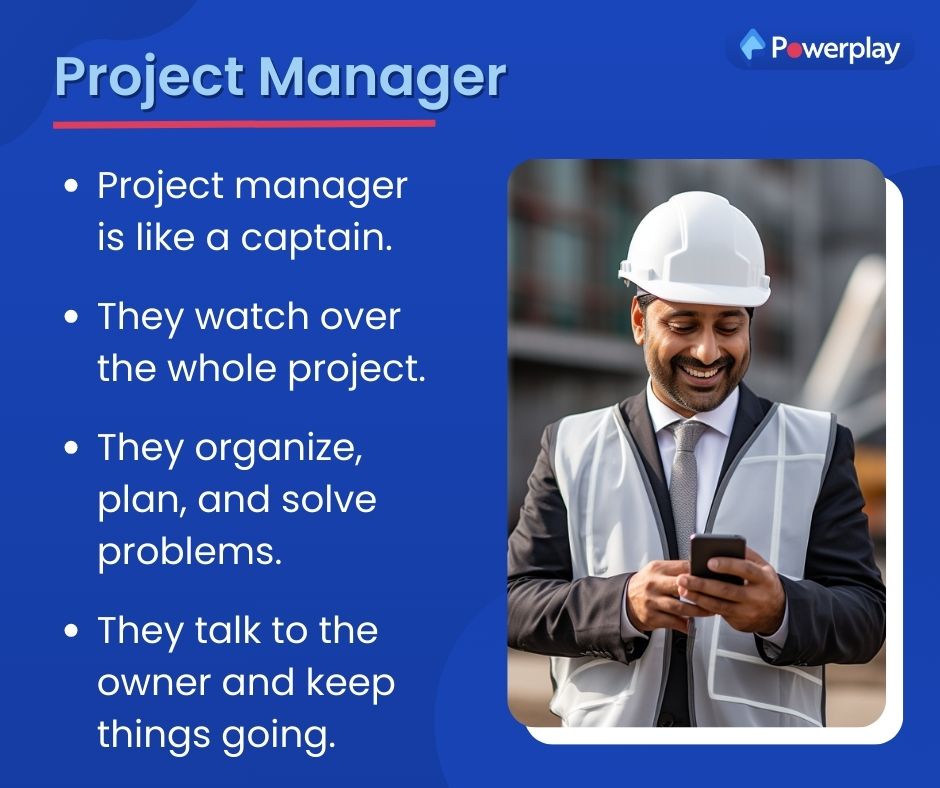
The project manager is like the captain of the ship. They oversee the entire construction project from start to finish. Their job involves coordinating with everyone involved, making schedules, managing budgets, and solving any problems that arise along the way. They’re the go-to person for the owner and keep everyone else on track.
Construction Contractor

Contractors are the ones who physically build the project. They take the plans provided by the owner and architects and turn them into reality and hire and manage the construction workers, order materials, and ensure that everything is done according to the specifications and on time. They work closely with the project manager to keep everything running smoothly.
Construction Sub-Contractor

Sometimes, certain tasks within a construction project require specialised skills. That’s where subcontractors come in. They’re hired by the main contractor to handle specific parts of the project, like plumbing, electrical work, or HVAC installation. Subcontractors work under the direction of the main contractor but bring their expertise to the table.
Site engineers are like the eyes and ears on the ground. They’re responsible for making sure that the construction work is carried out according to the plans and specifications. They supervise the workers, inspect the site regularly, and address any issues that may arise during construction. Site engineers work closely with both the project manager and the contractor to ensure everything stays on track.
Construction Management Bidding Process
The bidding process is a crucial aspect of construction project management, where contractors submit proposals to win contracts. It involves assessing project requirements, estimating costs, and preparing competitive bids that align with client expectations and project objectives.
Construction owners commonly issue two types of bids:

Open Bid
These bids are publicly advertised and are typically utilised for public projects, allowing any general contractor to submit a bid.
Closed Bid
The construction owner handpicks a group of contractors and solely receives bids from them for the construction project.
Following the receipt of bids from general contractors, construction owners determine the most suitable option through various selection methods:
– Low-Bid Selection
This approach involves selecting the contractor offering the lowest price bid.
– Best-Value Selection
Here, both the qualifications of the contractors and the proposed price are evaluated to choose the contractor offering the best price-quality relationship. Additionally, project owners meticulously assess the request for proposal (RFP) submitted by contractors to inform their decision.
– Qualifications-Based Selection
This method emphasises the qualifications of the contractors. Project owners evaluate each contractor’s request for qualifications (RFQ) to identify the most qualified candidate for the project.
Once a contractor is chosen, the bidding process concludes with the signing of a payment agreement contract. It is essential to review the most commonly utilised contract types at this stage.
Types of Construction Management Contracts
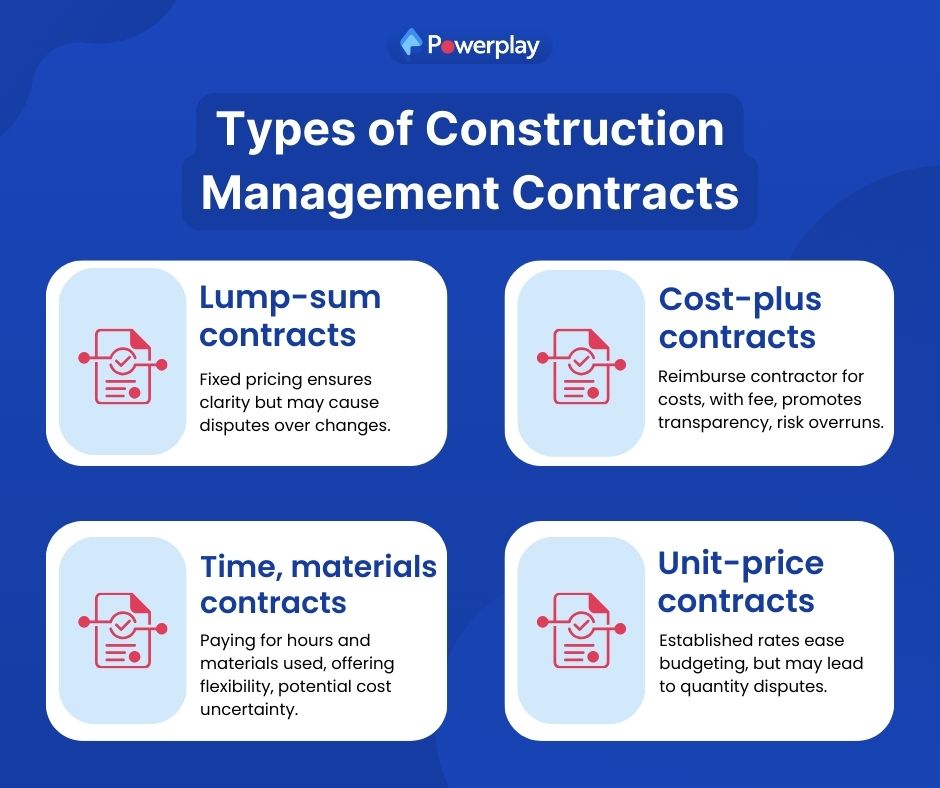
Construction projects typically employ various contract types, including lump-sum contracts, cost-plus contracts, time and materials contracts, and unit-price contracts. Each contract type offers distinct advantages and disadvantages, impacting project risk allocation and financial arrangements.
Lump-sum contracts
They provide fixed pricing for the entire project scope, offering clarity on costs but potentially leading to disputes over scope changes.
Cost-plus contracts
Reimburse the contractor for direct costs plus an agreed-upon fee, fostering transparency but potentially incentivizing cost overruns.
Time and materials contracts
Involved in paying for actual hours worked and materials used, providing flexibility but potentially leading to uncertainty over final costs.
Unit-price contracts
Have established rates for specific quantities of work, facilitating easy budgeting but potentially resulting in disputes over quantity measurements.
Construction Project Delivery Methods
Construction project delivery methods encompass approaches for organising, managing, and executing projects. Common delivery methods include design-bid-build, design-build, construction management at-risk, and integrated project delivery, each offering unique benefits suited to different project requirements.
Construction Project Management Processes
Construction project management involves several interconnected processes that guide project progression from initiation to closure:
Project Initiation
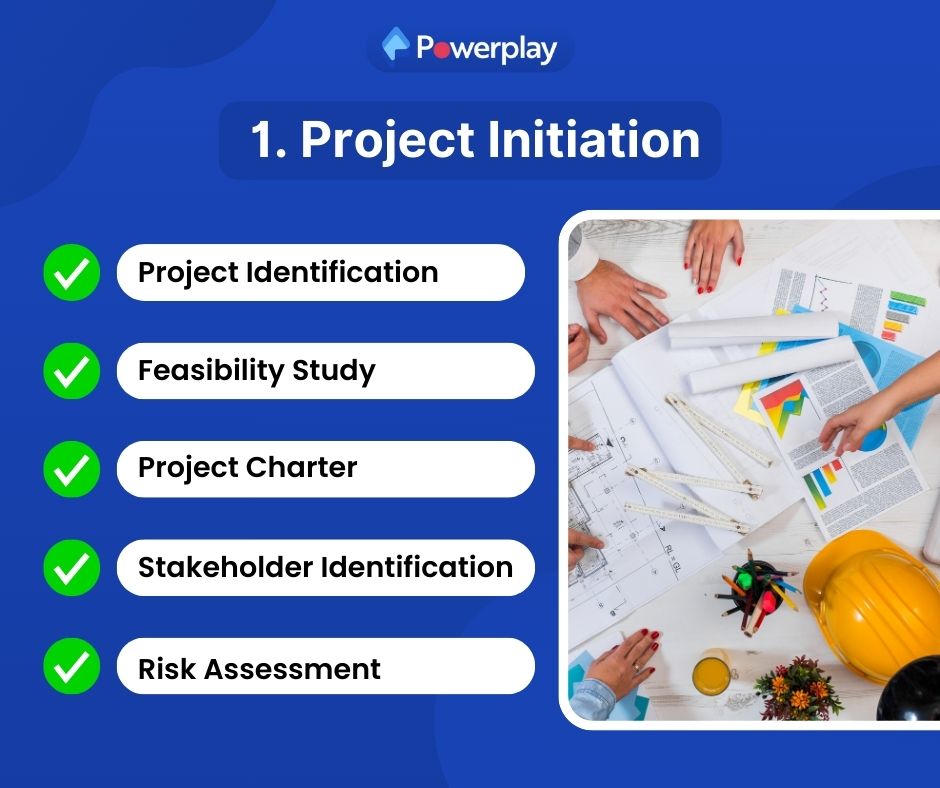
Project initiation marks the beginning of a construction project. During this stage, key objectives, scope, and stakeholders’ requirements are defined and documented. The following steps are typically involved in project initiation:
- Project Identification
- Feasibility Study
- Project Charter
- Stakeholder Identification
- Risk Assessment
Project Planning
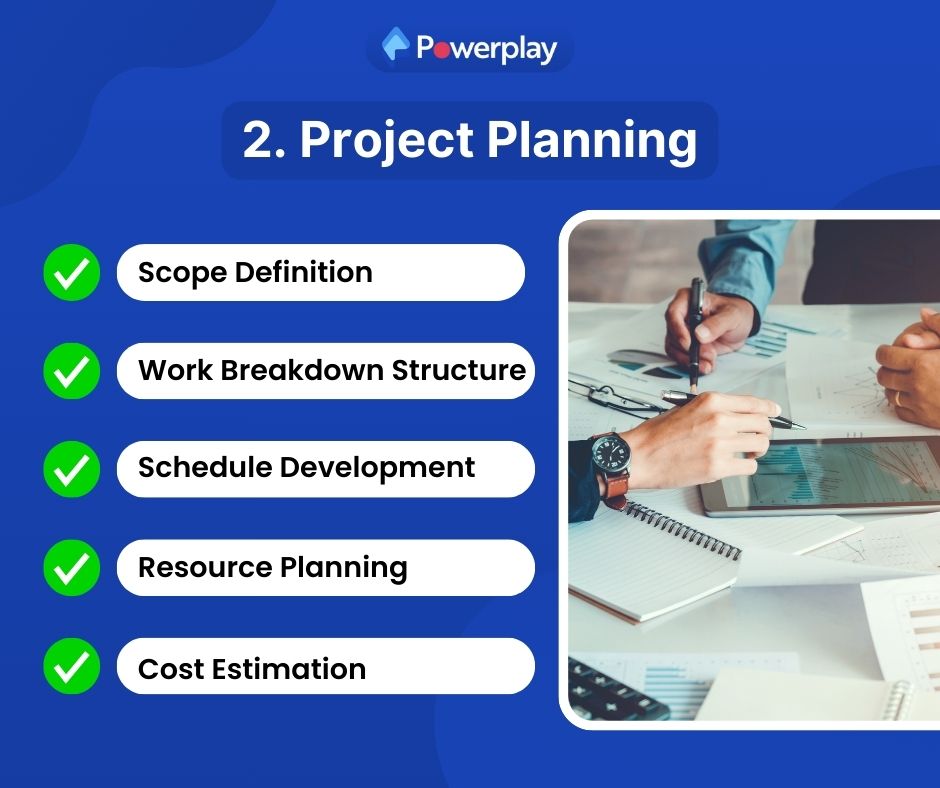
Project planning involves developing a comprehensive roadmap whcih outlines how the construction project has be executed, monitored, and controlled. It establishes the framework for achieving project objectives within constraints such as time, cost, quality, and resources. Key elements of project planning include:
- Scope Definition
- Work Breakdown Structure (WBS)
- Schedule Development
- Resource Planning
- Cost Estimation and Budgeting
Project Execution

Project execution is the phase where the project plan is put into action, and project deliverables are produced according to specifications. It involves coordinating resources, managing stakeholders, and implementing quality control measures to achieve project objectives. Key aspects of project execution include:
- Team Mobilisation
- Procurement and Logistics
- Quality Assurance
- Risk Management
- Progress Tracking
Project Monitoring and Control
.jpg)
Project monitoring and control are essential for keeping the project on track and achieving desired outcomes. It involves tracking project performance, identifying deviations from the plan, and implementing corrective actions to address issues promptly. Key activities in project monitoring and control include:
- Performance Measurement
- Variance Analysis
- Change Management
- Issue Resolution
- Communication
The 5 Stages of Construction Project Management
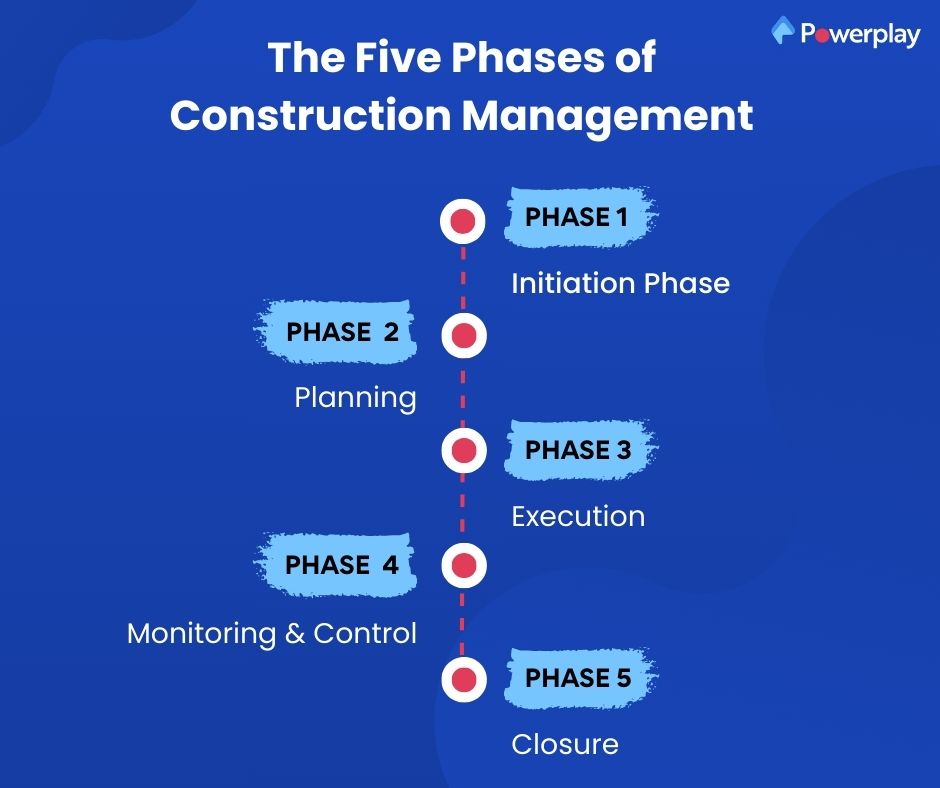
Construction project management typically follows a five-stage process:
Initiation
In this stage, the project is conceived, and key objectives, scope, and stakeholders’ requirements are defined. A project charter is developed to formalise project authorisation and alignment among stakeholders.
Planning
The planning stage involves developing a comprehensive project plan outlining tasks, schedules, budgets, and resources required for project execution. The project scope is defined, and risk management strategies are established to mitigate potential threats.
Execution
Project execution involves putting the project plan into action, mobilising resources, and producing project deliverables according to specifications. Procurement, quality assurance, and stakeholder management activities are implemented to achieve project objectives.
Monitoring and Control
Project progress is monitored against the baseline plan, and deviations are identified and addressed through corrective actions. Performance metrics, variance analysis, and change management processes are used to keep the project on track and within defined constraints.
Closure
The closure stage marks the completion of the project and the handover of deliverables to the client. Project performance is evaluated, lessons learned are documented, and final reports are prepared. Contractual obligations are fulfilled, and project closure documentation is archived for future reference.
By following these five stages of construction project management diligently, project teams can navigate challenges, mitigate risks, and achieve project success within specified constraints and stakeholders’ expectations.
What Is Construction Project Management Software?
Construction project management software streamlines project planning, scheduling, communication, and collaboration processes. Some key features offered by it are – Gantt charts, resource allocation tools, document management, and real-time project tracking, enhancing efficiency and productivity.
Construction Project Management Tools
Construction project management tools play a vital role in facilitating the planning, execution, monitoring, and control of construction projects. These tools include a wide array of software applications, platforms, and technologies designed to streamline project workflows, enhance collaboration, and improve decision-making processes. Here’s a detailed overview of some common construction project management tools:
Scheduling Software
Scheduling software enables project managers to create and manage project schedules efficiently. These tools allow users to develop Gantt charts, assign tasks, set milestones, and track progress against the timeline. Popular scheduling software includes Microsoft Project, Primavera P6, and Smartsheet.
Building Information Modeling (BIM) Tools
BIM tools revolutionise the way construction projects are planned, designed, and executed. This software allows stakeholders to create digital representations of the project, incorporating 3D models, specifications, and data. It also facilitates collaboration, clash detection, and coordination among architects, engineers, and contractors, minimising errors and optimising construction processes.
Project Management Dashboards
Project management dashboards provide real-time visibility into project performance metrics, KPIs, and key milestones. These dashboards consolidate project data from various sources and present it in a visual format, enabling stakeholders to monitor progress, identify trends, and make informed decisions. Platforms like Tableau, Microsoft Power BI, and Klipfolio offer customisable project management dashboards.
Document Management Systems
Document management systems centralise project documentation, drawings, contracts, and correspondence in a secure and accessible repository. These systems streamline document creation, revision, approval, and distribution processes, enhancing collaboration and version control. Popular document management systems include SharePoint, Procore, and Autodesk Construction Cloud.
Collaboration Platforms
Collaboration platforms facilitate communication and collaboration among project team members, stakeholders, and external partners. These platforms offer features such as file sharing, messaging, task assignment, and project updates, enabling seamless coordination and information exchange. Examples of collaboration platforms include Microsoft Teams, Slack, and Asana.
Types of Construction Projects
Construction projects vary widely in scope, scale, complexity, and purpose. Understanding the different types of construction projects is crucial for tailoring project management approaches and strategies to meet specific requirements. Let us understand which are some common types of construction projects:
Residential Construction
It involves building or renovating single-family homes, multi-family dwellings, townhouses, condominiums, and apartment complexes. Residential projects range from small-scale renovations to large-scale developments, each with unique design considerations and regulatory requirements.
Commercial Construction
Commercial construction encompasses the construction of office buildings, retail centres, restaurants, hotels, and other commercial facilities. These projects often require specialised features such as open floor plans, HVAC systems, electrical wiring, and accessibility accommodations to meet the needs of businesses and tenants.
Industrial Construction
It focuses on building facilities for manufacturing, processing, warehousing, and distribution purposes. Industrial projects include factories, warehouses, distribution centres, power plants, refineries, and processing plants, requiring specialised infrastructure and equipment to support industrial operations.
Infrastructure Construction
The Development of essential public utilities and transportation systems constitutes infrastructure construction. Infrastructure projects include roads, bridges, tunnels, airports, railways, ports, dams, water treatment plants, and sewage systems, supporting economic growth, mobility, and quality of life in communities.
Renovation and Restoration Projects
Renovation and restoration projects involve refurbishing existing structures to improve functionality, aesthetics, and safety. These projects may include interior renovations, exterior upgrades, historical preservation, and adaptive reuse of heritage buildings, revitalising communities and preserving cultural heritage.
Unique Challenges of Construction Management
Construction management faces numerous challenges that require proactive planning, innovative solutions, and effective risk management strategies. Some of the unique challenges of construction management include:
Labour Shortages
The construction industry faces challenges related to skilled labour shortages, workforce demographics, and labour market dynamics. Competition for skilled tradespeople, engineers, and project managers can lead to project delays, cost overruns, and quality issues, necessitating workforce development initiatives and talent retention strategies.
Supply Chain Disruptions
Construction projects rely on a global supply chain for materials, equipment, and components. Disruptions such as trade tariffs, transportation bottlenecks, natural disasters, and geopolitical instability can disrupt supply chains, leading to project delays, cost escalation, and procurement challenges.
Technological Advancements
Rapid advancements in technology, such as Building Information Modeling (BIM), drones, robotics, and prefabrication, are transforming the construction industry. Adopting new technologies requires investment, training, and change management to realise productivity gains and competitive advantages while managing associated risks and implementation challenges.
Project Complexity
Construction projects are becoming increasingly complex, with multiple stakeholders, interdisciplinary teams, and intricate design requirements. Managing project complexity requires effective communication, collaboration, and coordination among stakeholders, as well as robust project management processes and systems.
Risk Management
Construction projects are fundamentally risky due to factors such as weather conditions, site conditions, technique changes, contractor performance, and unforeseen events. Effective risk management involves identifying, assessing, and mitigating risks throughout the project lifecycle and maintaining project resilience in the face of uncertainties.
How can Powerplay help in construction project management?

Powerplay offers a comprehensive suite of construction project management solutions designed to streamline workflows, enhance collaboration, and optimise project outcomes. With its robust features and user-friendly interface, Powerplay empowers construction teams to overcome challenges, mitigate risks, and successfully deliver projects on time and within budget. Here’s how Powerplay can help in construction project management:
Integrated Project Planning
Powerplay facilitates integrated project planning by centralising project data, documents, and communications in a single platform. Project managers can create detailed project plans, define tasks, allocate resources, and establish timelines using intuitive planning tools. By providing a holistic view of project activities, Powerplay enables stakeholders to align efforts, identify dependencies, and optimise resource utilisation for improved project outcomes.
Real-Time Collaboration
Powerplay promotes real-time collaboration among project teams, stakeholders, and external partners. Its cloud-based platform allows users to share documents, exchange messages, and collaborate on tasks from any device, anytime, anywhere. By facilitating seamless communication and information sharing, Powerplay enhances teamwork, reduces misunderstandings, and accelerates decision-making processes throughout the project lifecycle.
Resource Management
Powerplay offers robust resource management capabilities to help construction teams effectively allocate and manage resources. Project managers can track labour, equipment, materials, and subcontractors’ availability, ensuring optimal resource utilisation and productivity. By identifying resource constraints and balancing workloads, Powerplay helps prevent overallocation, minimise delays, and optimise project schedules for improved efficiency.
Budget and Cost Control
Powerplay enables construction teams to establish and monitor project budgets, track expenses, and control costs throughout the project lifecycle. Its budgeting and cost control features allow users to create detailed budgets, track actual costs against budgeted amounts, and generate real-time cost reports. By providing visibility into project finances and variances, Powerplay helps identify cost overruns, implement corrective actions, and maintain financial accountability for project stakeholders.
Document Management
Powerplay simplifies document management by centralising project documents, drawings, RFIs, change orders, and submittals in a secure and accessible repository. Its document management features include version control, revision tracking, and document sharing capabilities, ensuring that stakeholders have access to the latest project information at all times. By streamlining document workflows and eliminating manual processes, Powerplay enhances collaboration, reduces errors, and improves project documentation accuracy.
Task Tracking and Progress Monitoring
Powerplay enables construction teams to track project tasks, milestones, and progress in real time. Its task tracking and progress monitoring features provide visibility into project status, identify bottlenecks, and track performance against project schedules. By monitoring task completion rates, identifying critical path activities, and analysing project performance metrics, Powerplay helps ensure that projects stay on track and milestones are achieved according to plan.
Issue Management
Powerplay supports proactive issue management by helping construction teams identify, assess, and mitigate project issues. Its issue management features enable users to capture and prioritise risks, develop mitigation strategies, and monitor risk exposure throughout the project lifecycle. By promoting risk-aware decision-making and contingency planning, Powerplay helps construction teams anticipate potential challenges, minimise disruptions, and safeguard project success.
Reporting and Analytics
Powerplay offers robust reporting and analytics capabilities to help construction teams track project performance, analyse trends, and make data-driven decisions. Its customisable dashboards, reports, and KPIs provide stakeholders with actionable insights into project progress, costs, schedule adherence, and quality metrics. By facilitating performance monitoring and trend analysis, Powerplay enables continuous improvement, informed decision-making, and project success optimisation.
Conclusion
Construction project management is a complicated discipline that requires detailed planning, effective communication, and agile management practices. By knowing the key principles, processes, and tools of construction project management, project teams can navigate challenges, mitigate risks, and achieve project success. With the right strategies and resources in place, construction projects can thrive in today’s dynamic and competitive environment.
Share
Dharmesh Dave is a communications professional with eight years of experience in crafting compelling PR, branded, and marketing content. His passion lies in the art of creative storytelling, making him a zestful force in the field of communication
